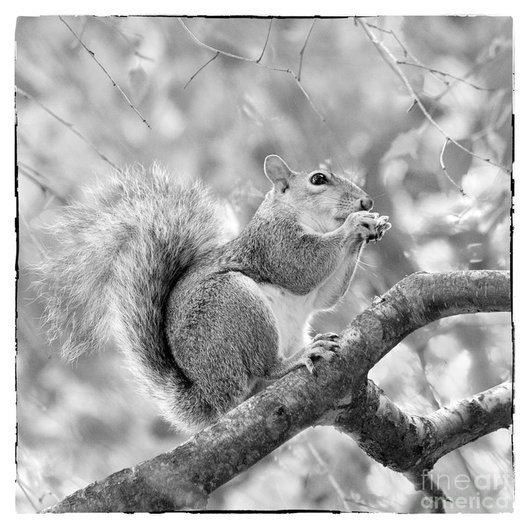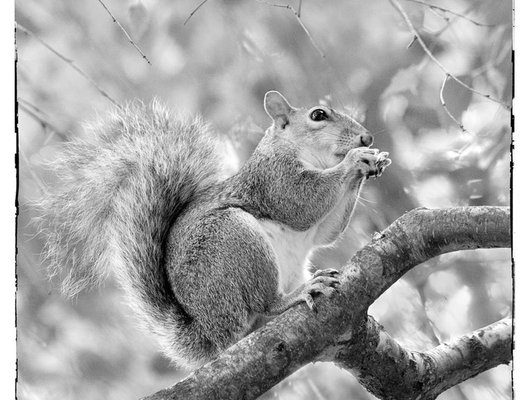
The story of squirrels is like a winding trail through a forest, filled with twists and turns. They belong to the family Sciuridae, which includes not just the cute, tree-climbing squirrels but also ground squirrels, flying squirrels, and even marmots. Picture this: millions of years ago, long before squirrels took their current form, their ancestors were simple rodents. Over time, they adapted to their environments, developed new survival strategies, and diversified into the 285 species we recognize today. Let’s dive deeper into this evolutionary history.
The Origins of Squirrels
The journey of the squirrel began in the late Eocene Epoch, around 40 million years ago. At this time, the earth was a different place, teeming with lush forests and an array of animal species. The earliest ancestors of squirrels were small, primitive rodents. Think of them as the grandparents of today’s squirrels—tiny, unassuming, but full of potential.
These early rodents had a lot in common with modern squirrels: they were nimble, quick, and capable of climbing trees. As they evolved, they adapted to different niches in their environments. Some adapted to life in the trees, developing long tails to help them balance and navigate branches. Others stuck to the ground, becoming adept at burrowing. This divergence set the stage for the various squirrel types we see today.
Interestingly, the first true squirrels appeared about 24 million years ago. These early species were more specialized than their ancestors, exhibiting the traits we associate with modern squirrels—like those bushy tails and sharp claws. They were the pioneers of a new era, carving out their places in forests and grasslands.
Types of Squirrels
Today, we can categorize squirrels into three primary groups: tree squirrels, ground squirrels, and flying squirrels. Each group has its unique adaptations that reflect their lifestyles and habitats.
- Tree Squirrels: These are the ones you most commonly see in parks and backyards. They are agile climbers, using their claws to grip tree bark. Their strong hind legs allow them to leap from branch to branch. Examples include the Eastern Gray Squirrel and the Fox Squirrel.
- Ground Squirrels: Unlike their tree-dwelling cousins, ground squirrels live in burrows and are often seen foraging for food on the ground. They have shorter tails and bodies that are built for running. The California Ground Squirrel is a prime example.
- Flying Squirrels: These whimsical creatures don’t actually fly; they glide! With their extra skin flaps, they can soar from tree to tree. The Northern Flying Squirrel is a fascinating example, using its gliding ability to escape predators and navigate between trees for food.
Understanding these categories helps clarify just how versatile and adaptive squirrels have become over millions of years. They’ve conquered various habitats, and their unique traits illustrate their evolutionary success.
Adaptations and Survival Strategies
Squirrels are masters of survival, and their evolutionary history is rich with adaptations that have helped them thrive in diverse environments. One noteworthy adaptation is their diet. Squirrels are primarily herbivorous, feeding on nuts, seeds, fruits, and even fungi. Their strong incisors grow continuously, allowing them to gnaw on tough materials like acorns and tree bark.
Another crucial survival strategy is their ability to store food. Squirrels gather nuts and seeds during the fall, burying them in various locations to create a cache for winter. This behavior not only ensures their survival during lean months but also contributes to forest growth, as some buried nuts sprout into new trees.
Moreover, their agility and speed play significant roles in avoiding predators. Squirrels can change direction quickly while running, helping them escape hawks, snakes, and coyotes. Their bushy tails are like built-in parachutes, aiding in balance and communication. When a squirrel senses danger, it can use its tail to signal to others and redirect its leaps for escape.
The Impact of Urbanization
In recent decades, urbanization has significantly impacted squirrel populations. As cities expand, squirrels have adapted magnificently to these new environments. You might be wondering, how do squirrels thrive in bustling urban areas filled with people and noise?
First off, urban areas often provide abundant food sources. Squirrels have become quite the opportunists, foraging for leftover snacks in parks and trash cans. Their adaptability means they can easily exploit these new resources. In fact, they’ve learned to navigate human-made structures, using buildings, power lines, and trees to their advantage.
On the flip side, urban living comes with challenges. Squirrels must dodge cars and navigate busy streets, which can lead to higher mortality rates. But their remarkable resilience shines through. Studies show that urban squirrels tend to have larger brains relative to their body size, suggesting that living in complex environments may drive cognitive evolution.
Conservation and Future
As we look to the future, the conservation of squirrel populations is important. While many species are thriving, some face threats from habitat loss and climate change. Protecting green spaces and ensuring that squirrels have safe habitats to flourish is crucial.
Additionally, understanding squirrels can help us appreciate their roles in ecosystems. They act as vital seed dispersers and contribute significantly to forest regeneration. By taking care of our environment, we help ensure that squirrels and other wildlife continue to thrive.
You might be curious about how you can get involved. Supporting local conservation efforts, maintaining natural green spaces, and being mindful of wildlife can all make a difference. Every little bit helps!
The evolutionary history of the squirrel is a captivating tale of adaptation, survival, and resilience. From their humble beginnings as small rodents to today’s diverse and agile species, squirrels have crafted a remarkable niche in various ecosystems. Their ability to adjust to challenges—whether in forests or bustling urban settings—demonstrates their incredible adaptability.
So, next time you see a squirrel leaping from branch to branch or rummaging through your backyard, take a moment to appreciate the rich evolutionary history behind that little critter. Squirrels are more than just furry visitors; they are living examples of nature’s ingenuity and adaptability. Embracing and protecting these remarkable creatures ensures they’ll continue to thrive for generations to come.

